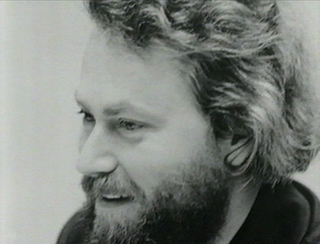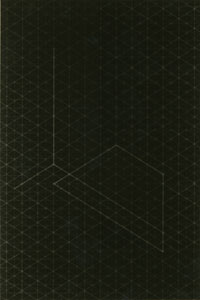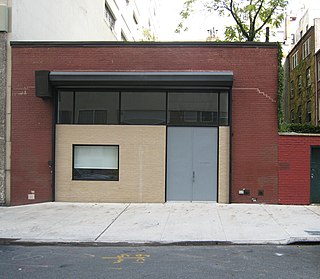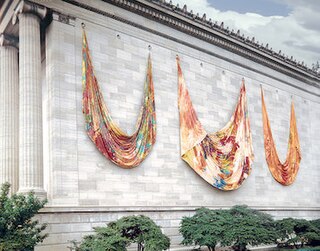
Dan Flavin was an American minimalist artist famous for creating sculptural objects and installations from commercially available fluorescent light fixtures.

Donald Clarence Judd was an American artist associated with minimalism. In his work, Judd sought autonomy and clarity for the constructed object and the space created by it, ultimately achieving a rigorously democratic presentation without compositional hierarchy. He is generally considered the leading international exponent of "minimalism", and its most important theoretician through such writings as "Specific Objects" (1964). Judd voiced his unorthodox perception of minimalism in Arts Yearbook 8, where he says, "The new three dimensional work doesn't constitute a movement, school, or style. The common aspects are too general and too little common to define a movement. The differences are greater than the similarities."

Eva Hesse was a German-born American sculptor known for her pioneering work in materials such as latex, fiberglass, and plastics. She is one of the artists who ushered in the postminimal art movement in the 1960s.
Thom Merrick is an American contemporary artist.

Blinky Palermo was a German abstract painter.

Anthony Peter Smith was an American sculptor, painter, architectural designer, and a noted art theorist. As a leading sculptor in the 1960s and 1970s, Smith is often associated with the Minimalist art movement.

The Kunstmuseum Liechtenstein is a state art museum in Vaduz, Liechtenstein. The building by the Swiss architects Meinrad Morger, Heinrich Degelo and Christian Kerez was completed in November 2000. The museum is a collection of international modern and contemporary art and the national art collection of the Principality of Liechtenstein. In 2015, the new Hilti Art Foundation exhibition building was added to the Kunstmuseum.

Alighiero Fabrizio Boetti, known as Alighiero e Boetti was an Italian conceptual artist, considered to be a member of the art movement Arte Povera.

Fred Sandback was an American minimalist conceptual-based sculptor known for his yarn sculptures, drawings, and prints. His estate is represented by David Zwirner.
Paul Thek was an American painter, sculptor and installation artist. Thek was active in both the United States and Europe, exhibiting several installations and sculptural works over the course of his life. Posthumously, he has been widely exhibited throughout the United States and Europe, and his work is held in numerous collections including the Hirshhorn Museum and Sculpture Garden in Washington, DC, the Centre Georges Pompidou, Paris, and Kolumba, the Art Museum of the Archdiocese of Cologne.
Richard Ernst Artschwager was an American painter, illustrator and sculptor. His work has associations with Pop Art, Conceptual art and Minimalism.
David Reed is a contemporary American conceptual and visual artist.

David Von Schlegell was an American abstract artist, sculptor and educator.
Marisa Merz was an Italian artist and sculptor. In the 1960s, Merz was the only female protagonist associated with the radical Arte povera movement. In 2013 she was awarded the Golden Lion for Lifetime Achievement at the Venice Biennale. She lived and worked in Turin, Italy.

Greenspon was an art gallery located in the West Village of New York City owned by Amy Greenspon.

Gary Kuehn is an American artist who pioneered the Postminimal and Process Art movements of the 1960s.

The Kasmin Gallery, formerly known as the Paul Kasmin Gallery, is a New York City fine art gallery, founded in SoHo in 1989.
Klaus Kertess was an American art gallerist, art critic and curator. He grew up in Westchester County north of New York City, the second of three children. After graduating from Phillips Academy, he studied art history at Yale University and in 1966 founded the Bykert Gallery with his college roommate Jeff Byers. The gallery name was formed from a compound of both of theirs. At Bykert he showed a roster of artists which included; Brice Marden, David Novros, Barry Le Va, Alan Saret, Chuck Close, Bill Bollinger, Dorothea Rockburne, and many others.

The Kunstmuseum Wolfsburg is an art museum in central Wolfsburg, Lower Saxony, opened 1994. It presents modern and contemporary art and is financed by the Kunststiftung Volkswagen.

Draped paintings are paintings on unstretched canvas or fabric that are hung, tied, or draped from individual points and allowed to bunch or fold. The style was developed in the late 1960s and 1970s by several groups of artists, and popularized most notably by American artist Sam Gilliam, who created a large number of Drape paintings throughout his career, often as large-format installation pieces designed to fill an entire wall or space.














